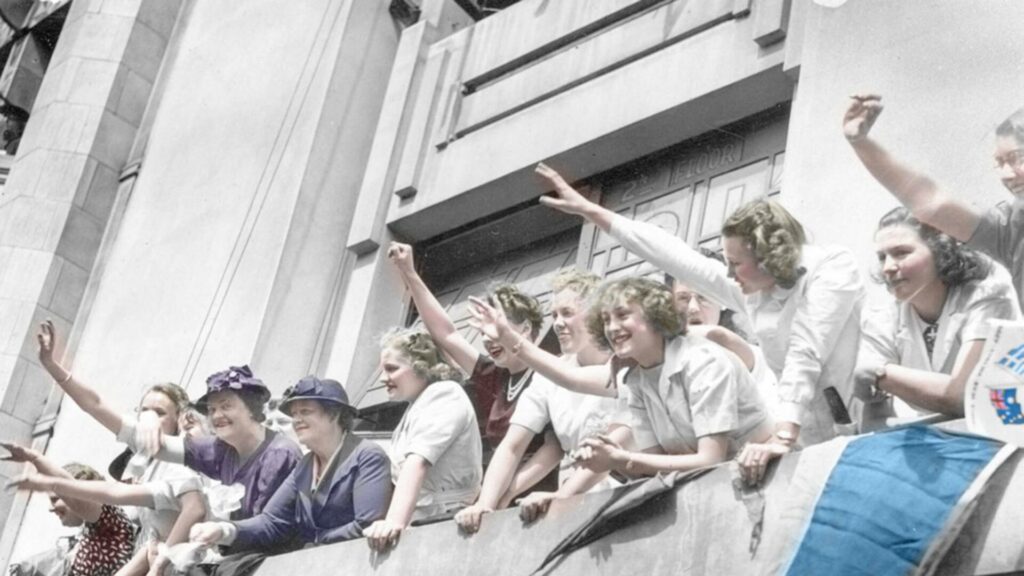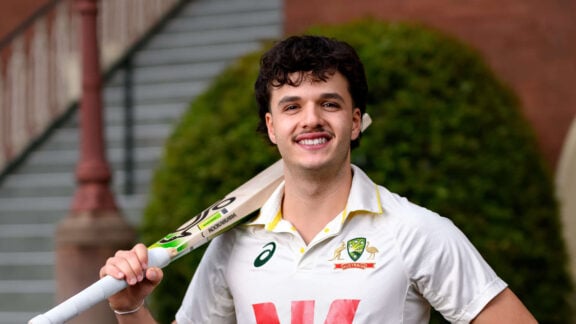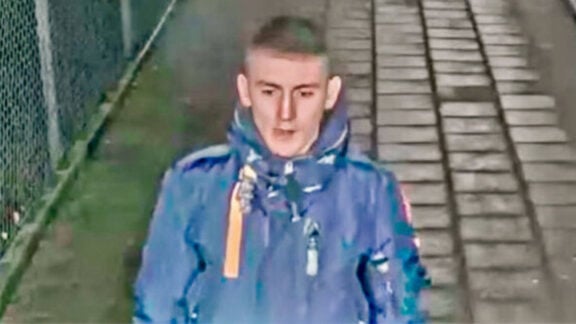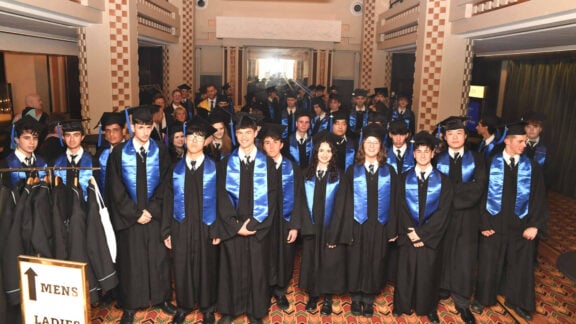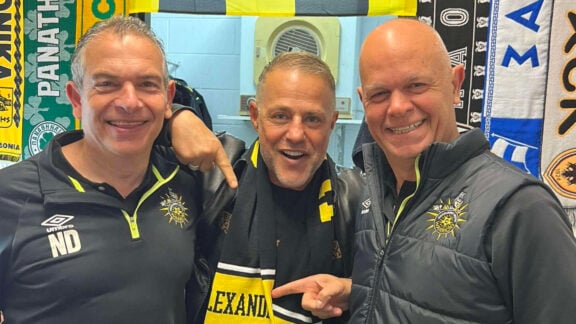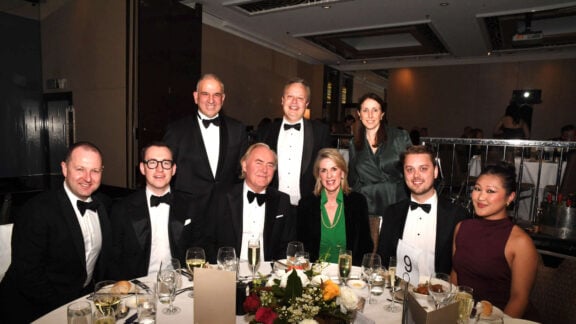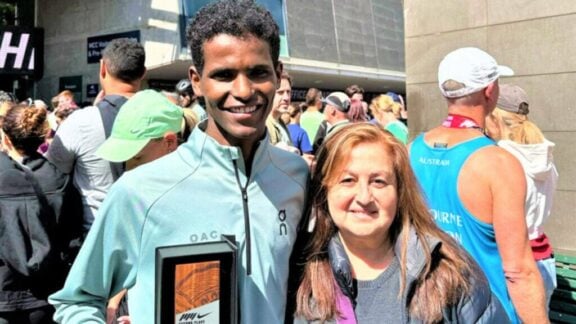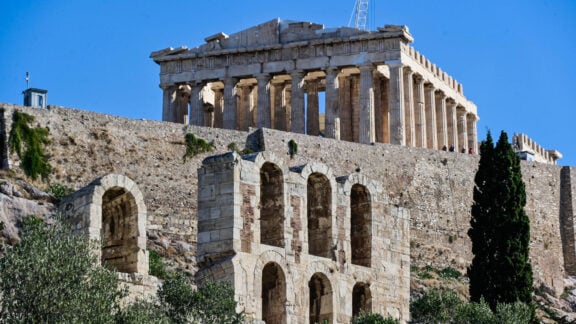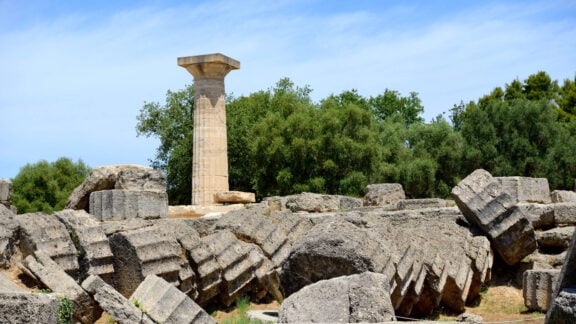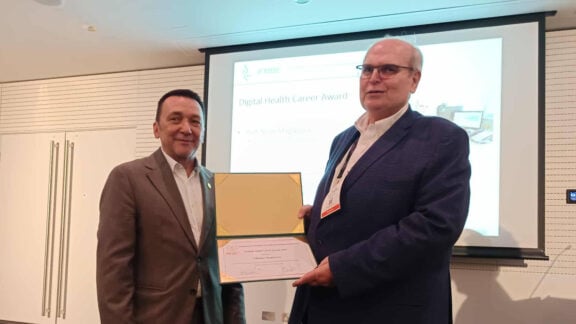This month we remember and commemorate Greece’s valiant and successful resistance to the Italian invasion in 1940. We should also remember that Greece’s fight was responded to across Australia by people coming together to support the Greek people in their hours of need. One of the biggest responses took place in Melbourne on Friday, 14 February 1941. The people of Melbourne crowded into the city in one of the largest demonstrations of Greek-Australian solidarity ever seen.
Nearly 100,000 Melbournians – 10 per cent of the population – had thronged into the city to line Swanston Street from the Yarra up to Bourke Street and beyond. Traffic had been diverted from the city centre. Through the steamers and confetti showering the crowds, the sun shone on that bright summer’s morning.

It wasn’t Moomba. And it wasn’t a sporting event. The blue and white decorations of the street stalls and flags waived by the crowd said it all. They had come to Melbourne in their thousands to declare their support for Greece’s fight against the Italian invasion.
This was Victoria’s first major fundraising event in support of Greece in WW2. Encouraged by the Australian Government, across the country fundraising committee’s had been established in the wake of the invasion. In establishing the Melbourne fund, the Lord Mayor, Councillor Frank Beaurepaire stated that: “the valour of the Greek Army had changed the whole situation in the Mediterranean and Australians should do everything in their power to recognise the bravery of the gallant Greeks.”

The Lord Mayor urged all Victorians to take part in Greek Day by holding local fundraising events and over 30,000 Greek Day badges were distributed to Councils across Vitoria. The Chair of the new Commonwealth Council for Greek Day broadcast the night before the parade urging Melbournians to attend the event stating that “Greece’s cause was our cause and Greece’s war our war…”
The feature of the day was the march of 4,000 diggers along Swanston Street, in front of the Melbourne Town Hall and on through the city. They marched in their summer battle dress, “bronzed under the Bonegilla sun and clad in shorts and shirts”, as the Melbourne Argus reported the next day.

At 10am the diggers marched six-abreast up Swanston Street from Flinders Street led by their commander, Brigadier Lind and a goat – their regimental mascot – “which caused much amusement” with the crowd. The diggers were joined by eight bands marching with them – and four others assembled along the route.
As they marched the diggers would have taken heart from shouts of support and the waving of the special Greek War Victims Appeal flags from the crowds standing behind the barriers and in the windows and balconies above.
As the diggers passed the Town Hall building the salute was taken by the Governor of Victoria, Sir Winston Dugan, standing with the Lord Mayor and many senior Army officers, including Major-General Gordon Bennett, who had serve on Lemnos and at Gallipoli in WW1.

Greek Day badge from 1941. Photo: Jim Claven

Greek Day badge from 1941. Photo: Jim Claven

Greek Day badge from 1941. Photo: Jim Claven
As soon as the diggers had marched passed, hundreds of men and women got busy at more than 30 stalls set up through the route to raise funds for the Appeal. Many of stalls were bedecked in the blue and white colours of the Greek flag, with many helpers wearing Greek national costume.
For weeks before the City of Melbourne had appealed for volunteers to assist in the selling of the 70,000 special Greek Day badges and 10,000 paper Appeal flags produced as fundraisers. It was reported that over 700 women answered the call for volunteers. One of those was one of Australia’s famous soprano Miss Gladys Moncrieff – “Our Glad” – who made “a rousing appeal” for funds from the back of an army vehicle. Various organisations organised their own stalls, including RSL sub-branches. Richmond Sub-Branch President – Mr Long – “spent a busy and profitable day” conducting “raffles for the Greeks.”

Melbourne’s Greek community embraced the event, joining with the wider community in common cause. Since late 1940, members of the community joined in to donate and volunteer to the various fundraising efforts organised throughout Victoria to support Greece’s war effort. In Frankston, the local council unanimously supported the establishment of such a local fund and stated how appropriate this was given the residence of the Greek Consul in the municipality! And in Dandenong, a popular local fish shop owner donated a day’s takings to the Australian war effort.
In the week before the parade, one of Melbourne’s oldest Greek communities held a ceremony at the Prahran Town Hall to donate a large Greek National Flag to the Mayor of Prahran. They did so to honour the Greek soldiers fighting “in the tradition of Alexander the Great” alongside the Allies and looked forward to seeing the flag floating above the Town Hall. The Mayor responded stating that all Australians recognised the important role that Greece was playing as an Ally in the fight against the Axis and the Flag would indeed be flown alongside the Australian and British Flags.

Kitchens throughout Melbourne’s Greek community were busy in the days before the parade preparing delicacies that would be offered for sale. It would appear that the well-known Greek Consul – the Ithacan-born Antonios Lekatsis (known as Anthony Lucas) – and his family played a major role in organising the stalls and volunteers from the community which would become such a hallmark of the day.
Many Greek stalls are reported to have carried “a tempting assortment of wares” – cakes, pastries, shortbreads, rose–petal jam and Greek sweetmeats – all home-baked from traditional Greek recipes. One Greek stall offered “rare and tropical fruits.”
Many families from the community were involved. The Cospoditis’, the Raftopoulos’, the Maramaras’, the Sigalas’, the Karas’ and the Nicolaides’ – to name only a few. And of course the biggest effort was from the women and girls. At the Town Hall little Olga Marmaras is reported to have been “charming in Greek costume, taking a lively interest in the luck dip attached to the stall.” And at another stall in Bourke Street Miss Iris Nicolaides and Miss Danae Sigalas were dressed in Greek national dress selling buttons and badges. At one point in the crowd a group of Greek ex-servicemen gathered “to wish their Australian Allies well.”

Loudspeakers broadcast an appeal on the BBC by the Duchess of Kent – the former Princess Marina of Greece – seeking support for Greek war victims. Greece was facing “an unprovoked attack … Greece needs help and it needs it now,” she said. As her voice was heard by the huge crowd, many stalls sold “Marina Dolls” dressed in “Greek costume” in her honour.
The day was a great success. Over £4,000 was raised from the sale of the specially made Greek Day badges, stall sales and donations. State School children donated £250 and the women of the Legacy Club in Collins Street a further £198.
Melbourne’s Greek Day on 14th February was just the first of hundreds of events and fundraisers held throughout Victoria and Australia. Similar major rallies were held in most major capital cities, such as Sydney and Brisbane. Local groups supported their local councils on fundraising drives – such as when South Melbourne’s Mrs A Mott organised a stall in the main street of the town, raising over £120 for the cause. In Horsham over £83 was raised, the local the newspaper reporting that “very few refusals were made to their appeal of ‘Buy a button for our Greek Allies.'”And a week later another Appeal fundraiser was held at the Melbourne Town Hall, with women from Melbourne’s Greek community, dressed in classical Greek costumes, welcoming attendees as they ascended the stairs of the Town Hall for an “all star concert”. These efforts would continue until the end of the war and even beyond.

Greek Day should not be forgotten. Melbourne had shown its support for Greece in its hour of need. But it also demonstrated the solidarity between ordinary Australians and their Greek-background neighbours. This great day of solidarity held in Melbourne 76 years ago should be celebrated as a symbol of all the Greek Days held in WW2.
My inspiration for researching this story grew from hearing the fond memories of some of those from Melbourne’s Hellenic community who took part in these Greek Day events all those years ago – Ms Olga Black, Dr Peter Mangos and Mr Peter Kanis. And I thank them for sharing their stories with me.

For many years I have thought it would be fantastic if Stonnington Council flew the Greek Flag from its Town Hall as it did all those years ago? What great recognition of Melbourne’s Greek Day. Now that would be fine thing – or as we say bravo!
Jim Claven is a trained historian, freelance writer and published author who has been researching the Hellenic link to Australia’s Anzac story for many years. He is the author of Lemnos & Gallipoli Revealed and Grecian Adventure as well as his latest publication, Imbros & Gallipoli Revealed. Jim is keen to hear from members of the community who took part in Greek Day and also locate any items of memorabilia connected to these events. He can be contacted at jimclaven@yahoo.com.au
The colourised photos to the right have been digitally enhanced by Jim Claven’s co-researcher Paul Sougleris.


